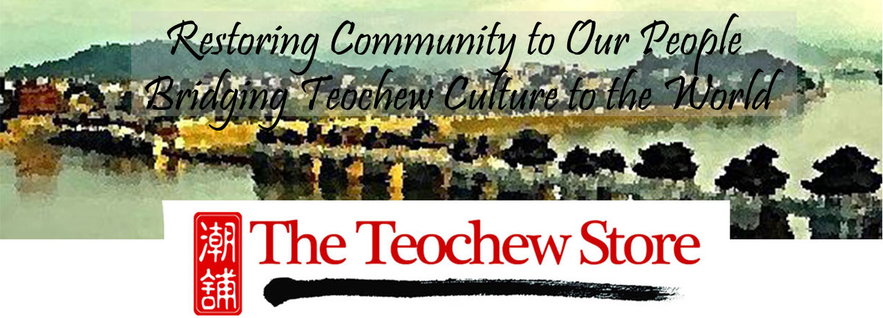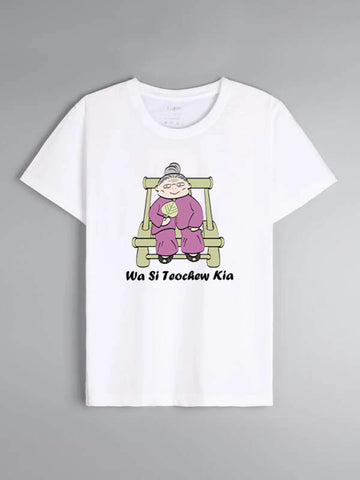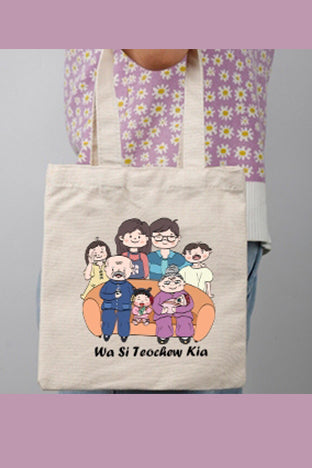A delightful collection of rare postcards from the late 19th to early 20th century published to commemorate the 151st anniversary of the opening of Swatow as a Treaty Port after the Opium War.
- Language of Publication: English and Chinese 中英双语
- Free shipping 免费寄送
- Free PDF copy upon purchase 附送 PDF电子版本
Prices shown are inclusive of shipping cost. For shipping to destination not listed, please kindly contact us.
显示的价钱已包含运费。如寄送目的地不在列表里,请联系我们。
“Memories of Old Swatow” features close to two hundred picture postcards and photographs of Swatow(汕头)and Chaochow (潮州)in the author’s collection, covering the period from the turn of the century to the 1950s.
This book wouldn’t have been possible without the Internet, as the bulk of my collection was purchased online, either through auction websites like eBay.com or through other postcard dealers on the Net. I started collecting postcards and photographs of these two cities sometime in November 1999, when I first chanced upon the eBay website. Most of my cards were bought from dealers in the United States, Britain, France and Japan, although quite a few of them were also acquired from far-flung places like Hungary, Belgium and the Czech Republic. One can imagine the near impossibility of building a collection of this present scale if the author had to personally travel to these countries, not to mention the amount of time that would have been spent sourcing for these cards.
Originally a small fishing village in the east of China’s Guangdong province, Swatow (or Shantou in hanyu pinyin) was opened to foreign trade in 1860, at the end of the Second Opium War between China, Britain and France. After its founding, Swatow developed rapidly as a major seaport and commercial centre. During its heyday in the 1930s, the city was home to numerous foreign consulates and foreign banks as well as dozens of western firms including the great trading houses of Jardine Matheson and Butterfield & Swire. It was also the port of departure from where hundreds upon thousands of Teochews - including the author’s great-grandfather - left their villages in search of greener pastures in Southeast Asia, from the late 19th century to just before the Second World War. Thanks to foreign influence during the early years, today one can still find within the historic quarter of Swatow many examples of colonial-style buildings, as well as rows upon rows of “Qilou” shophouses with its unique blend of Chinese and Western architectural styles, better known to Singaporeans as “five-foot-ways”.
This book is divided into five broad categories, namely “From the turn of the century to the 1930s”, “People and customs”, “The War Years”, “Swatow in the 1950s”, as well as “Scenic views of old Chaochow”.
The first section includes early views of the harbour, the old Customs House, offices and godowns of the various foreign trading firms, street scenes, schools, foreign consulates, places of worship and other buildings in the city. There are also a few scenes of Kakchio(礐石,Queshi in hanyu pinyin), a rocky promontory opposite Swatow city where many Westerners resided during the early days. Under the “People and customs” section, there are a few postcards depicting the daily life of the local population, as seen through the eyes of the foreigners.
Swatow was occupied by the Japanese during the Second World War (1939 - 1945). Japanese soldiers and civilians also snapped scenes of the occupied city and produced their own postcards, some of which are featured under the section “The War Years”. “Swatow in the 1950s” includes a dozen black and white photographs of street scenes and other well-known landmarks of the city during the post-war years, taken by local photographers. The final section - “Scenic views of old Chaochow” – features various scenes of the old prefectural city of Chaochow (Chaozhou in hanyu pinyin), roughly 30 kilometres north of Swatow.
Better known in dialect as “Teochew”, the name “Chaochow”, besides referring to the old walled city itself, also refers to the various Teochew-speaking counties of Chao’an(潮安), Chenghai(澄海), Chaoyang(潮阳), Jieyang(揭阳), Raoping(饶平), Puning(普宁), Huilai(惠来)as well as Nan’ao island(南澳)that the old Chaochow prefecture once had jurisdiction over. Historically and culturally speaking then, the two cities of Swatow and Chaochow are virtually inseparable and together they form the so-called “Chaoshan region”(潮汕), from where all the Teochews around the world can trace their ancestral roots. For this very reason, the author has also decided to include the section on Chaochow into this book as well.
Many of the early postcards in this book were published by Mee Cheung Studio(美璋照相)in Swatow, although there are also quite a few from European and Japanese publishers as well. Most of these cards or photographs can be dated based on their postmarks or through messages written by their senders, while the dates of others can only be roughly estimated based on the year the building or buildings depicted inside them was completed. Way back in 2002, I sent copies of some of the postcards and photographs in my collection to a friend in Swatow, Mr. Chen Jing-huai (陈荆淮), who featured them in Shantou Chengshi Shanshui(《汕头城市山水》), a pictorial book on the city published in 2003, with the author’s permission. Years later, I found the same materials that I had given to Mr. Chen reproduced in two other publications as well : Shantou Shiji Yaolan(《汕头史迹要览》,published in 2006), as well as Shantoubu Tushuo(《汕头埠图说》,published in 2009). Oh well …
Over the past decade, I continued buying Swatow postcards and photographs from dealers all over the world. Today I have amassed a collection of more than 300 images, of which some 180 have been selected for this current volume, published to coincide with the 151st anniversary of the founding of Swatow and the 30th anniversary of the establishment of the Shantou Special Economic Zone. I also have in my collection dozens of wartime Japanese magazines that show Swatow and Chaochow during the Second World War, as well as several other books and publications which also contain early photographs of the two cities - including those of the 1918 earthquake and the 1922 Swatow Typhoon, but these I shall save for another day. Compared to the ancient capital of Peking or the major cities of Shanghai, Tientsin, Canton and Hong Kong, early postcards and photographs of Swatow and Chaochow are extremely rare and hard to come by. In recent years, quite a few photo-books have been published featuring historical postcards and photographs of some of these major cities, but I have yet to come across any dedicated solely to Swatow and Chaochow.
Many of the images in this book have not been published previously, and should readers be able to connect with their Teochew heritage through these old, faded pictures of yesteryear, then all my efforts would not have been in vain.
I would like to extend my heartfelt thanks and appreciation to the Singapore Teochew Poit Ip Huay Kuan for sponsoring the publication of this book; Mr. Li Feng, Party Secretary of Shantou City, for his congratulatory message; Mr. Goh Nam Siang, President of the Teochew Poit Ip Huay Kuan, for his foreword, as well as Prof. Jao Tsung-I for his calligraphy for the Chinese title of this book. The author, born and bred in Singapore, does not profess to be an expert on Swatow history or to know more about the city than its native inhabitants, so any errors or inaccuracies in this book are all mine.
Lastly, this book is lovingly dedicated to my late father who passed away in February this year.
Terence Tan
September 2011, Singapore




